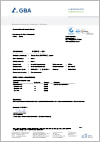Our Mild Ginseng Mushroom Brew is a harmonious composition of selected functional mushrooms and spices. For outstanding taste, optimum solubility and a full spectrum of mushrooms in one cup.
Cordyceps
Cordyceps is an extremely rare, precious mushroom that originally grew in the highlands of Tibet at elevations of over 3000m above sea level. The mushroom was discovered by yak herders, who noticed extraordinary vitality and resistance in the animals that ate it while grazing. Since then, for almost 1500 years, cordyceps has been used in traditional Chinese medicine for strengthening the body.
Reishi
Reishi is one of the most important mushrooms in traditional Chinese herbalism. Revered as the "mushroom of immortality" or "mushroom of eternal life," it is perhaps the most important basic mushroom there. According to tradition and early records, reishi has been used for around 4000 years.
Chaga
The Chaga mushroom originally comes from Siberia and northern China. It thrives on birch and other trees and is mainly native to the large birch forests of Russia, northern and eastern Europe and the Baltic states, as well as Canada, Alaska, northern USA, Korea and Japan. Mushrooms from living birch trees are particularly attractive for consumption as functional mushrooms. Inhabitants of Siberia have long made the mushroom into a strengthening tea and nicknamed it "God's gift." Chaga has had a firm place in Russian and Chinese tradition for around 4000 years.
Shiitake
After the button mushroom (Champignon), the shiitake is perhaps the most important edible mushroom in the world. Its special umami aroma and its firm texture have helped it to achieve culinary fame, particularly in Asian cuisine, earning it the nickname "king of mushrooms." The shiitake grows on dead wood in the deciduous forests of Japan, China and Vietnam. It has been used there as a food for thousands of years and is also considered one of the most important functional mushrooms. Its use in the Chinese tradition is documented in writings dating back over 2000 years. There it is praised as the "elixir of life."
Auricularia
Lovers of Chinese cuisine will be familiar with the Mu-Err, as this "Chinese morel" can be found in many Chinese dishes. Although the mushroom does not have a very pronounced flavour, it is nutritious and its special texture is highly valued. In Europe, its use in herbal medicine has been well-documented since the Middle Ages.
Hericium
Hericium Erinaceum – also known as lion's mane and bearded hedgehog – is considered a delicacy among edible mushrooms in Asia due to its fine aromas. Hericium has always been highly valued both in Asian natural history and by the indigenous peoples of North America.
Tremella
Tremella, also known as silver ear, is one of the most popular mushrooms in Chinese cuisine and tradition. Its growth alone is full of fascinating peculiarities. Tremella fuciformis itself is actually a type of yeast and does not form fruiting bodies on its own. As a slimy substance, the yeast moves on until it encounters another fungus; its preferred host is Annulohypoxylon archeri. When these two meet, the yeast penetrates the Annulohypoxylon, the cells fuse and from this fusion begins the growth of a completely new fungus, the silver ear.
Red ginseng
Red ginseng (Panax ginseng C.A. Meyer) originates from Northeast China and Korea, where the plant's roots have been used for centuries. The mature roots contain a particularly large number of saponins, specifically ginsenosides, and in traditional Chinese medicine are considered a tonic, which is why they are often referred to as a "power root." Due to the global popularity of genuine Panax ginseng, it is almost extinct in the wild and primarily exists as a cultivated plant.
Mainly the roots of the ginseng are used, which have developed over the years and contain a particularly large number of special saponins. These special saponins are also called ginsenosides and can be further differentiated on the basis of their chemical structure, for example into the ginsenosides Rg1, Rb1 and Rg3.




























